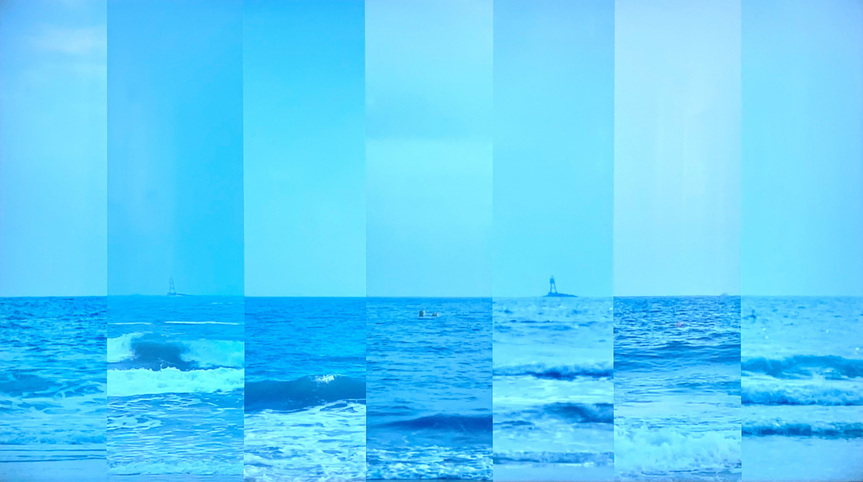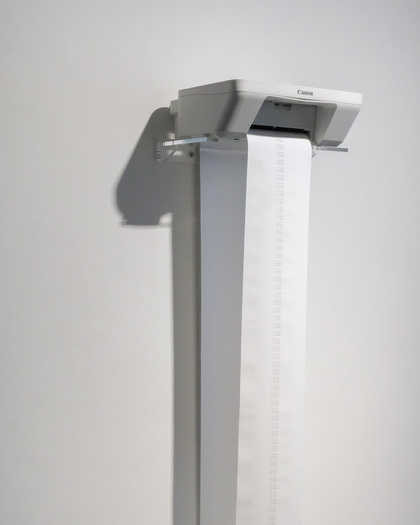-
From Current Issue
-
- Editor’s Letter Fire in the Heart
- Reviews I Gusti Ayu Kadek Murniasih
- Reviews 11th Seoul Mediacity Biennale: “One Escape at a Time”
- Dispatch Networked China
- One on One Monira Al Qadiri on Yukio Mishima
- Essays The rise of independent art spaces in pandemic-era Shanghai
- Features Tuan Andrew Nguyen
- Table of Contents
- Web Exclusives
- Archive
- Subscribe

R
E
V N
E
X
T
Installation view of “Tongueless,” at Goethe-Institut, Hong Kong, 2020. All images courtesy the artists and Goethe-Institut.
The title of Goethe-Institut Hong Kong’s mental-health-focused exhibition “Tongueless” drew inspiration from Emily Dickinson’s poem “Grief is a Mouse” (1863), which features the lines: “Best Grief is Tongueless – before He’ll tell – / Burn Him in the Public Square.” This sentiment resonates in Hong Kong, where mental illness remains taboo despite suicide claiming approximately 900 lives every year. “Tongueless” delved into the gaps between the reality of psychological struggle and the social expectation to appear “normal” through deeply personal paintings, installations, and video works by six Hong Kong artists. The emotionally weighty exhibition was bookended by videos of soothing ocean waves and muted movie scenes of car rides that lulled one into a state of blank calm, a reprieve from the bustling indifference of city life that lay beyond the doors.
The show opened with Andy Li San Kit’s video I will be found in the lost sea (2015), which splices footage from different beaches into a single seascape. The white noise of crashing waves through the headphones left the viewer awash in solitary mindlessness. The work was juxtaposed with Li’s Those Moments I Regret About Not Pressing the Shutter (2018– ), a boxy television set that clicks through a slide projector. The screen shows words crudely etched into film, describing moments gone uncaptured—“A girl in a white dress, crying,” “A dude taking cocaine next to me”—that feel raw and illicit, leading one to wonder whether it was circumstance or social custom that halted Li’s shutter. Most of the reel, however, is left blank for missed instances of the future. The screen ticks to those empty slides intermittently, like a rhythmic reminder to pay attention to moments in our own lives.
The restrictive force of social norms was also evoked in Chloe Cheuk’s I am fine, I am good, I am happy. (2016), created during a period of depression in the artist’s life. A loop of paper cycles through the mouth of a wall-mounted printer, spitting out blocks of text in a staid typewriter font stating, “I am fine, / I am good, / I am happy” over and over like an endless chant. As the sheet progresses through its mechanical revolutions, barely perceptible creases begin to appear, imprints of a destructive social pressure to always appear happy.
Sean Wong’s Presence (2011– , selected from 2018–20) brought viewers into a darkened black-box space where hundreds of seemingly blank notebook pages flutter on the walls of a narrow corridor; upon closer inspection, pen-scrawled self-portraits stare back. These portraits were sketched every night in front of a mirror in an attempt to define a constantly changing self. Wong explained that he sketched quickly and in pen to avoid making edits, as though to capture both the self in the mirror and the self holding the pen. Timestamped down to the minute, the portraits are a visceral calendar—or graveyard—of past selves.
In Maybe They Will Die For Us Tomorrow (2017), Ho Sin Tung delved into a different grief rooted in not the mindlessness of days past but in the lingering remembrance of stories. Seven tunnel books displayed delicate paper cutouts in rows of laser-cut frames that stage key scenes from the lives of fictional characters whose deaths moved the artist, such as Michael Furey in James Joyce’s The Dead (1914) and Velutha in Arundhati Roy’s The God of Small Things (1997). The microcosmic tunnel books are accompanied by a video where Ho’s eulogies to the characters, formatted like end credits, roll across a black background. Audio snippets of rushing winds on Saturn—the astrological symbol of loneliness and isolation—soundtrack the video, filling the room with a quiet solemnity. In Ho’s work, each life is laid bare in full, relived, remembered, and mourned in vibrant, colorful detail; each story captures a character’s entire world in a moment of solitary tunnel vision.
“Tongueless” was on view at the Goethe-Institut, Hong Kong, from September 3 to October 3, 2020.
To read more of ArtAsiaPacific’s articles, visit our Digital Library.

















